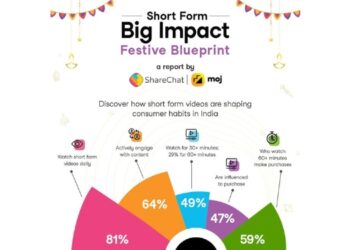By Lionel Quinny, Lead Creative Strategist, WATConsult
There are over 1.8 billion websites on the internet today giving rise to a number of issues among brand managers and designers. Primarily, what is the larger purpose where websites are concerned? Should you be doing right by the brand (Brand managers) or by the audience (designers)?
Let’s dive deep and view this from both sides of the coin.
From the lens of brand managers, the brand’s website should be a tool to fulfil its goal of getting the brand maximum exposure and screen time from its audience. But what does this mean?
Brand managers need their websites to get traffic, more time spent and a low bounce rate. The way to achieve these metrics according to managers is to add or flood the website with engaging content for the visitor. However, this might also mean that the people on the site are lost due to information overload, which results in increase of user time spent on the website (albeit in trying to find the right information) and an incomplete user journey (not meeting his end goal). While winning the war of “time spent on the site” and “low bounce rate”, what we sometimes fail to understand is that the time spent and bounce rate is not a generic or standard benchmark (in terms of numbers).
Consider below industry standards for bounce rate, (as per Comscore) among different industries and one can notice how these differ basis industries, thus proving the point of not being an important metric to be stressed upon.

The second main reason for the fallout is due to mismatch of website type and understanding the user’s purpose of visit. Not understanding the purpose of visit results in:
1) Loading the website with all kind of content + engagement elements, leading to bad or long load times. Every second counts – time taken to load results in a drop out or continuation.
But does that mean, we edit good content on the site?
Not really, a well-designed website and wisely chosen elements can help with short/less load times. One of the web designing principles – “Hick’s Law” can help streamline and construct content better.
Hick’s law simply explains that if you give a user numerous options to choose from, his time taken to complete the task or take a decision is also increased.
Understanding the content construct and segmentation helps craft a structured website and provides a fluid, uninterrupted user experience.
2) When the purpose of visit is not understood, it’s hard to cater to the end objective/goal that the brand/website needs to achieve. A poorly constructed website journey will have the user spend more time on the website but that’s out of desperation for finding information and not desire to explore or find what he is looking for. Hence, understanding the purpose helps take design calls like colour, element placement, fonts, tabs, etc. effectively, thus helping to craft an appropriate website architecture.
Brands invest all of this time to crack, create and host content to engage with visitors and help them find what they want but all those efforts go in vain if the website is heavy and the user bounces off before even consuming or seeing any of that content on the website.
Considering the theme of this article, one can say that both brand managers and designers need to work in tandem. Metrics and data help in giving direction, while design is a key tool in ensuring the right experience. If the tools at our disposal (Analytics/ data-based insights for brand managers and design guidelines/principles for website designers) are used in collaboration, the site visitors can have a more seamless, enjoyable and complete experience.
Here are some web design guidelines (from the point of view of both brand managers and designers) that can help take into account both metrics as well as experience: –
Simplicity:
What’s good stays, what’s not goes out. Don’t shy away from cutting strings from elements that don’t support site visit, user’s purpose and brand objective.
Hierarchy:
A smooth website user journey is a structured one. The right structure of a website will provide users what they are looking for. This might cut down time spent on the website but will ensure re-visits.
Navigation:
Don’t confuse, mislead and throw them off the rails. Craft a navigation in a way that serves the purpose of your user’s visit. Smart usage of navigation can help brands achieve their goals and is appreciated by the visitor too.
Consistency:
Don’t make your website look like patch work, everything should blend in to stand out. No matter which page of the website the user is on, the experience that he/she gets in terms of fonts, layout, animations and transitions should be uniform.
Accessibility:
No matter what the device screen size or operating device, the journey should be untouched and experience should be unchanged.
Conventionality:
People are open to accepting things/designs/elements they are more familiar with. Exposing them to anything new always has a learning curve and increases their time taken for acceptance.
User centricity: (User is the sun to your web universe)
Changes/improvements/additions to a website should revolve around the user’s experience and feedback. This helps in creating a richer user experience.
Create. Test. Rework. Launch.
Above all.
If you build a website for a user, build it as a user and not as a brand manager or designer.
Authored by Lionel Quinny, Lead Creative Strategist, WATConsult

















